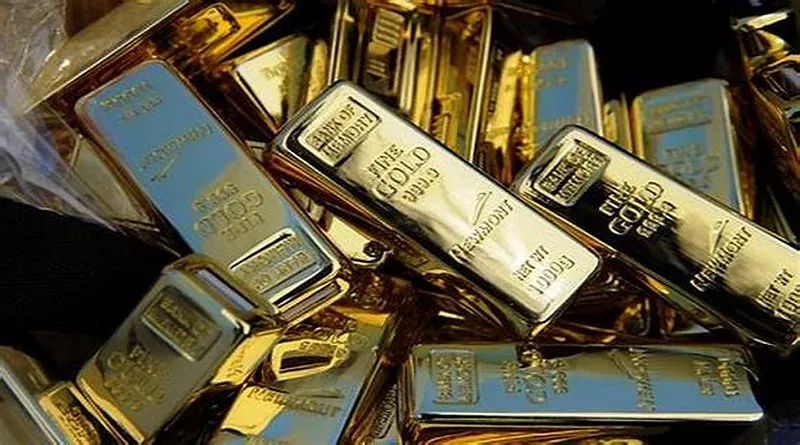Gold has long been regarded as a valuable asset and a hedge against inflation and economic uncertainty. Understanding its historical price movements can provide valuable insights for investors today. This article will explore the price of gold in 1982, examining the economic context, market trends, and significant events that influenced its valuation during that year.
Gold Price Overview: The Early 1980s
Economic Context in 1982
The early 1980s were marked by significant economic challenges, particularly in the United States. High inflation rates, rising interest rates, and economic recession shaped the landscape for gold prices.
Inflation: In the late 1970s and early 1980s, inflation soared, reaching a peak of over 14% in March 1980. Investors often turn to gold during inflationary periods, as it is seen as a store of value.
Interest Rates: To combat inflation, the Federal Reserve, under Chairman Paul Volcker, raised interest rates significantly. By 1982, the federal funds rate was around 15%. High interest rates generally dampen gold prices since they increase the opportunity cost of holding non-yielding assets like gold.
Recession: The U.S. economy entered a recession in 1981, which continued into 1982. Economic uncertainty often leads to increased demand for gold as a safe haven.
Gold Price Trends in 1982
In 1982, gold prices were influenced by these economic factors, along with geopolitical events and market dynamics. Here’s a breakdown of the key price movements throughout the year:
January 1982: The year started with gold prices around $500 per ounce. The price had already seen significant fluctuations in previous years due to economic instability and geopolitical tensions.
March 1982: Gold prices peaked at approximately $600 per ounce, reflecting ongoing concerns about inflation and economic uncertainty.
Mid-1982: As the Federal Reserve’s policies began to take effect, gold prices started to decline. By mid-year, prices had fallen to around $400 per ounce as market sentiment shifted.
December 1982: Gold ended the year at approximately $450 per ounce, showing some recovery but still reflecting the overall downward trend from earlier highs.
Factors Influencing Gold Prices in 1982
1. Inflation and Economic Policy
The high inflation rates of the late 1970s and early 1980s led many investors to seek refuge in gold. However, the aggressive monetary policies adopted by the Federal Reserve, aimed at curbing inflation, had a significant impact on gold prices. As interest rates climbed, the appeal of holding gold diminished relative to interest-bearing assets.
2. Geopolitical Tensions
Global political events also played a role in shaping gold prices. The ongoing Cold War, coupled with conflicts in the Middle East, influenced investor sentiment. Events such as the Iranian Revolution and the Soviet invasion of Afghanistan created uncertainty, driving some investors toward gold.
3. Supply and Demand Dynamics
Gold’s supply and demand fundamentals also affected its price in 1982. Jewelry demand remained relatively stable, but investment demand fluctuated based on economic conditions. Additionally, gold production levels and mining outputs influenced market dynamics.
4. Market Sentiment and Speculation
Market psychology significantly influenced gold prices in 1982. Investor sentiment shifted as economic indicators changed, leading to speculative trading that exacerbated price volatility. The allure of gold as a safe haven asset fluctuated with changing economic narratives.
The Role of Gold in Investment Portfolios
In 1982, the perception of gold as a hedge against inflation and a safe haven continued to be a significant consideration for investors. The following points highlight gold’s role in investment portfolios during this period:
1. Diversification
Investors often included gold in their portfolios to diversify risk, particularly during economic downturns. The uncertain economic climate made gold an attractive option for risk-averse individuals.
2. Inflation Hedge
Gold’s historical role as an inflation hedge was particularly relevant in the early 1980s. As inflation rates soared, many sought to protect their purchasing power by investing in gold.
3. Speculative Investments
The volatility in gold prices also attracted speculative investments. Traders sought to capitalize on price fluctuations, leading to increased trading activity and volatility in the gold market.
Conclusion
The price of gold in 1982 reflects a period of economic uncertainty characterized by high inflation, rising interest rates, and geopolitical tensions. Gold prices fluctuated significantly throughout the year, peaking at approximately $600 per ounce before ending the year around $450 per ounce. Understanding the historical context and price movements of gold can provide valuable insights for today’s investors. As gold continues to be a relevant asset in investment portfolios, examining its past performance helps to inform future investment strategies and decisions.
By exploring the factors that influenced gold prices in 1982, investors can better appreciate the complexities of the gold market and its role in financial stability. Whether for wealth preservation or diversification, gold remains a compelling choice for many investors seeking to navigate the uncertainties of the financial landscape.
Related topics:
- The Price of Gold in 1981: A Historical Perspective
- What is Gold Price in UK Today(October 28)
- What is Gold Rate in India Today (October 28)


